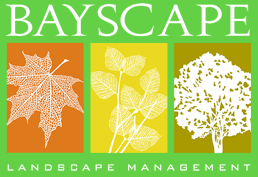You have probably seen a nearby peach or nectarine tree that is suffering greatly from peach leaf curl……
How does it happen? Peach leaf curl causes leaves of peaches and nectarines to discolor, pucker, distort, and eventually fall off. Peach leaf curl is a fungal disease which overwinters in the tree bark and around the buds. The fungus is seen in the trees as spores, usually in the new buds. Rain and abnormal wet weather splashes spores onto the emerging leaves causing more problems and emerging shoots to die.
Fruit production (thus income for farmers) can be reduced in severe infestations of peach leaf curl. Only rarely do the reddish, curled, wrinkled areas develop on fruit surfaces, but later on in the season infected areas become corky and crack. Airborne fungal spores land on buds and infest newly-emerging leaves in spring. The fungus feeds on the young leaves and affects their development so that they become curled and distorted. The smaller leaf size makes them less efficient at making food for the tree.
Can the tree recover? Yes, trees can recover to make a second flush of growth and the leaves are usually unaffected by the fungus, but peach leaf curl fungus survives on fallen leaves and branches to re-infect next season’s new buds. Leaves finally turn brown, shrivel up, and drop from the tree. Fruits may drop early or turn a reddish purple color with bumpy growths on the surface. The cycle can repeat for years!
Is there any good news? Yes, the second set of leaves and buds emerge and can develop normally when the rains stop and daytime temperatures warm up. Fungal applications for most fruits on schedule should control the disease.
According to the experts, there are solutions to decrease problems created by peach leaf curl:
1. Rake up any fallen leaves and pull weeds that are growing beneath the drip line of the trees. Fertilize the area under the trees thoroughly.
2. Before the weather heats up, spread four inches of fresh organic mulch around the base of trees to maintain general tree health.
3. Water trees well on dry days and in summer seasons.
4. Remove any infected leaves as soon as they are seen, together with flowers and fruit.
5. Cover trees with polythene sheet in winter to prevent development of fungus.
6. Prune infected trees in the fall before spraying. Avoid over-feeding with nitrogen fertilizer.
7. Spray trees with Bordeaux mixture. Late January or early February would be a good time and then repeat two weeks later before the leaves emerge from the buds.
8. Applications of fertilizers with seaweed can stop the spread of fungus.
 If your trees are showing signs of leaf curl now, the best thing you can do is follow the suggestions above to assist your trees through the stressful seasonal growing periods. Good Luck and please let us know if Arbortek helped you saved your fruit this year!
If your trees are showing signs of leaf curl now, the best thing you can do is follow the suggestions above to assist your trees through the stressful seasonal growing periods. Good Luck and please let us know if Arbortek helped you saved your fruit this year!

